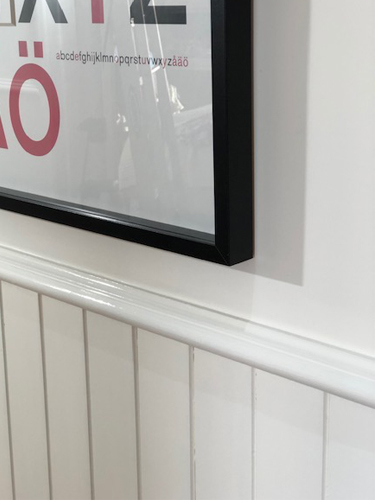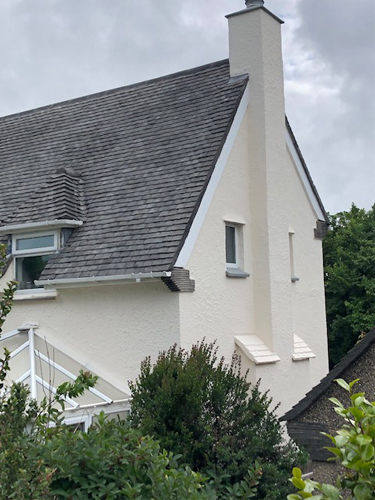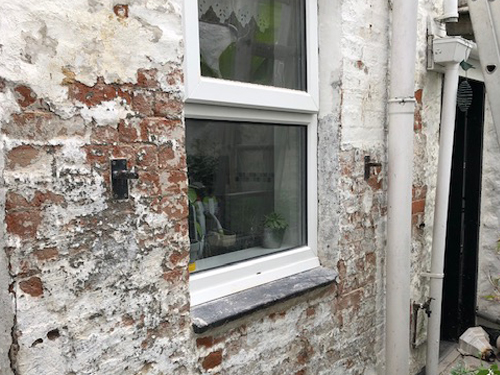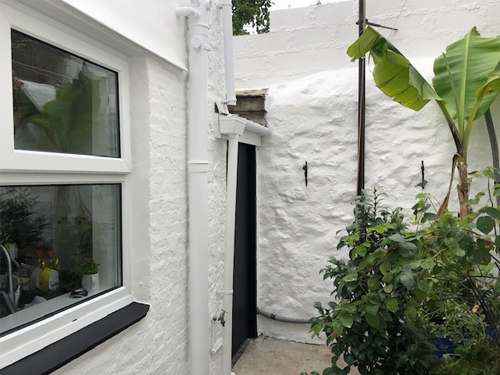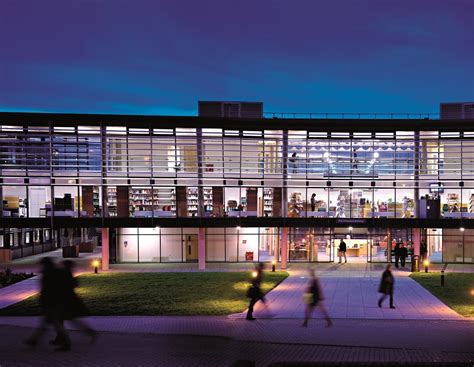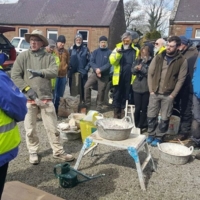This website uses cookies so that we can provide you with the best user experience possible. Cookie information is stored in your browser and performs functions such as recognising you when you return to our website and helping our team to understand which sections of the website you find most interesting and useful.
New Member Spotlight: Joel Endersby

Welcome to new BLF member, Joel Endersby, who runs a family business along with his wife that specialises in both traditional and natural building and finishes. He talks about the ethos behind his work and passion for using traditional sustainable materials.
Tell us more about your business
I have been in the building trade for 28 years since leaving school: I went straight into working for the family painting and decorating business. Over the years we have had the privilege of working on many historic and period properties alongside some true craftsmen in different aspects of restoration and renovation.
Since 2018, the business has tried to focus on using natural products, traditional building methods of lime, clay plaster and sustainable materials such as wood wool boards and sheep’s wool insulation. We are passionate about using the correct materials for the job to take a line from (Oxley 2003) “traditional buildings need to perform as their builders intended “ – this means that the materials of repair and conservation should be compatible.
How do eco paints differ from others?
They differ in many ways. You need to start afresh in your approach to the job if you have come from a trade-based background like I did. They do not always apply like a synthetic paint and can take a bit of patience to adapt to. However, my observation over the years is that there are significant advantages. Firstly, your own health – many health professionals including HSE (Health & Safety Executive) recognise the damaging effects of the toxicity of paints.
Eco paints reduce the risks to the applier and the occupant with reduced volatile organic compounds content, no or low odour. There is also a huge benefit to the environment without the plastics and toxic chemicals that bind them together – which coincidentally then benefits the property. With the surfaces free of vinyl, latex and synthetic pigments, the walls breathe – these paints reduce greatly the exposure or growth of mould and stay colourfast due to the natural pigments.
I could go on, but you readers have lives to carry on with! But do some research and order some to try. I am confident that with time you will see the benefits, including developing abs!
- Edward bulmer natural paint
- Mineral & silicate paints. Eco friendly trim paint
- Keim mineral paints
What are the considerations when painting lime render and lime plaster?
The main considerations are firstly to do the homework. Check how long since the surface was rendered or plastered, whether sufficient time has passed for the coating to be applied and then consider which product to use. Will it be a natural mineral paint, lime wash or an alternative silicate-based paint?
Breathable is a word often used but is the product really breathable? I heard a good analogy of breathable by Adam Brown from Cornish Lime once. He said you could wrap your face in cling film and pop a pin hole near your mouth; it’s breathable, you just won’t live very long! And that’s so true. We always check with the manufacturer on its rating and where possible get a specification on the product from the manufacturer to make sure that when it’s applied, it continues to work alongside the lime surface.
Preparation is key as is making sure that windows – or any surfaces – are covered from splashes. Choose the right weather and never treat it like a modern latex paint. Allow the correct time between coatings to maximise its performance.
Are there any advantages to using eco paints with traditional builds/materials?
I would say the finish. There is nothing to beat the finish from lime wash, mineral paint, clay paint or linseed oil. They look authentic and they complement the building. I had one customer who loves the finish from a mineral paint we used externally so much that he wanted to grab a chair and just sit and look at it. I popped back recently after a year of it being applied: it looked as good as if it was painted yesterday and he still feels the same about the walls and finish.
What has been your experience of applying traditional lime mortars?
Good. Personally, I do not think there’s a more beautiful finish than a lime rendered or plastered surface even in its unpainted state. It does something to the building that’s hard to describe, but it looks right and in conjunction with the right finishes, transforms a home or building. I have also found them to be far more durable both in terms of the way they perform and how they handle the damp climate here in Cornwall.
What do you hope to achieve with being a member of the Building Limes Forum?
More than anything, to keep learning. I absolutely love my job and I am always mindful that there are so many craftspeople who have superior knowledge and understanding of materials or experiences that can help me continue to do my very best to maintain the buildings I have the privilege to work on.
For more information about Joel Endersby
Become a member
Members of the Building Limes Forum form a community of lime enthusiasts and practitioners, most of whom are producers, suppliers, specifiers or users of lime.
Useful documents
Contact Building Limes Forum
Building Limes Forum
Riddle’s Court
322 Lawnmarket
Edinburgh, EH1 2PG, UK

